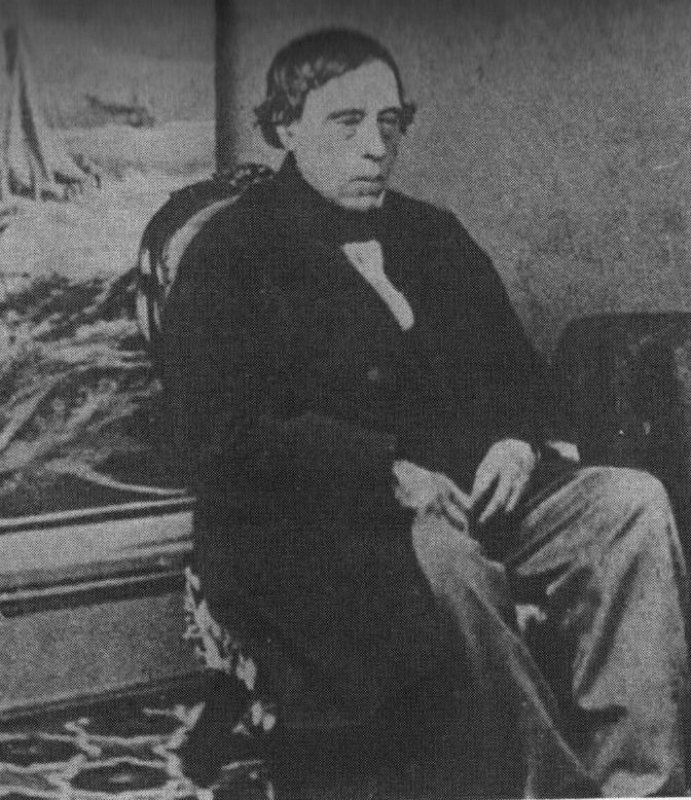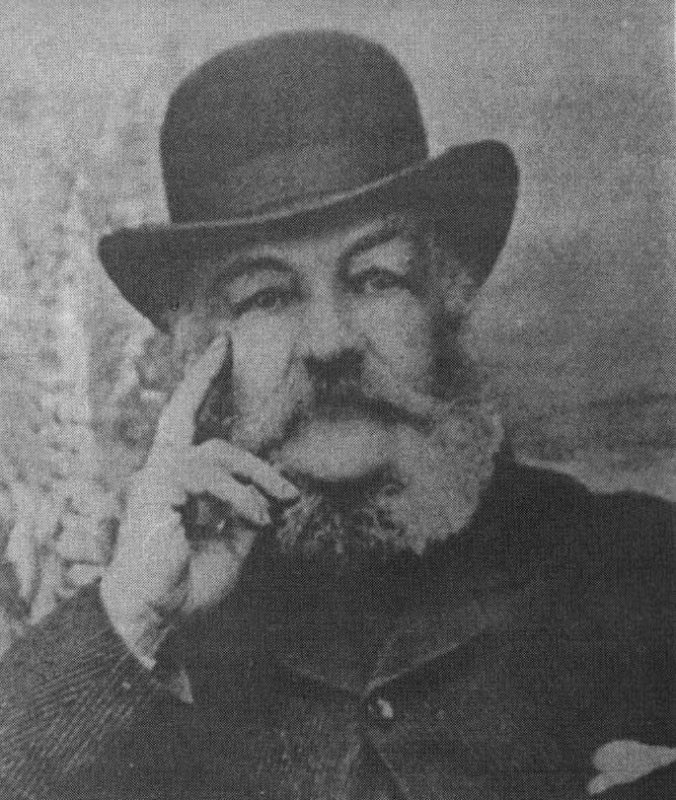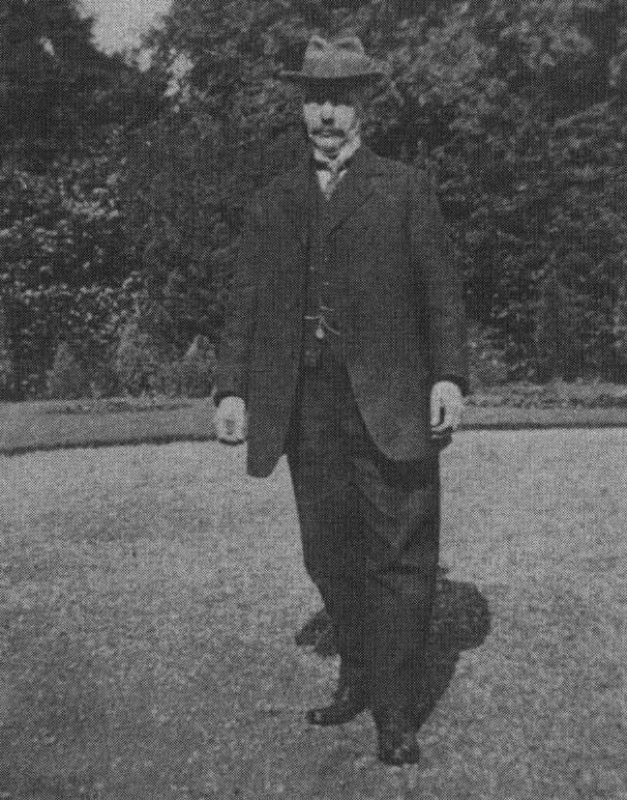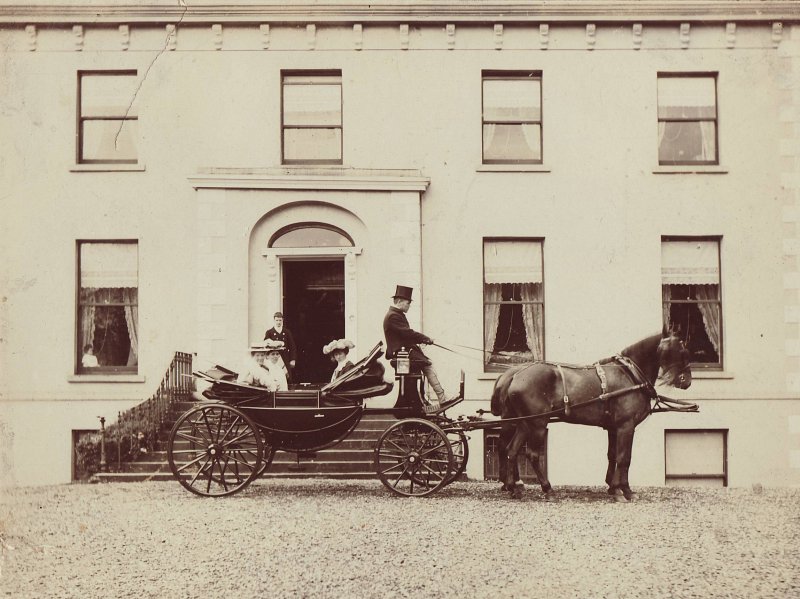-

Alexander Clark (1785-1871)
A strong character who was left fatherless as a toddler due to a riding accident.
-

Harry & Alexander's father, William
William Clark was the son of Alexander Clark (1785-1871). Both married into the Newport family of Waterford
-

Harry & Alexander's mother, Marianne
Marianne was the daughter of Captain Simon Newport of Suirville, Waterford
A.W Clark’s life in brief
Born at Ampertaine in 1857 on March 25. Went to Foyle College, aged 12, in 1869 and on to Royal Lancaster Grammar School in 1871, aged 14. He married Frances Carpendale in 1893 and they lived at Grillagh near Maghera until 1905. After the death of his father William in 1904 he moved to Ampertaine and lived there till his death in 1937.
He and his wife Frances had four sons: Alexander (born 1898); George (born 1901); Ivan (born 1902); Percy (born 1904) and one daughter, Violet (born 1896) who married Trevor Humphreys of Cheshire. He was High Sheriff in 1922 and a member of the advisory committee of the Ulster Bank.
His eldest son Alexander M Clark married Dorothy Lopdell and had three sons, Aubrey, Gordon and Dennis. His second son George married Betty Pelly and had three daughters, Patricia, Nancy and Sally; he married secondly Ann Macausland and had a son. Christopher. and a daughter Joanna.
The story begins
When I left Lancaster School in the year 1874, I started in business with my father William Clark. He had previously had his brothers John and Charles working with him, and from 1860 to about 1866 the name of the partnership was William and John A Clark. Then the partnership was dissolved amicably and John went to Castledawson, having taken as a new partner a man named Jaffe from Belfast.
Charles Clark remained in Upperlands till about 1869 and was a very good businessman and of great assistance to my father. Charles left Upperlands for Castledawson, married a Miss Lane of Aghadowey and was father to Alex, Jack and Jackson Clark of Castledawson. When Charles Clark was in Upperlands, he lived in old Ampertaine house (the thatched dwelling which was the Upperlands family home before the present Ampertaine was built) along with his wife, my grandfather Alexander Clark who died in 1871 and his sister Jane Clark.
In the time of my grandfather Alexander Clark (1785-1871), the trade was almost entirely white linen which he bought in local markets in a brown, unbleached state, in places like Ballymena and Dungannon, and had them bleached and finished here in Upperlands. A scutch mill occupied the present site of the road engines (opposite the Upperlands “Old Mill” coffee shop).
There is a family story that our forebear Alexander Clark fought a duel in Coleraine with a certain General Patterson of Grillagh. The story goes that Alexander’s employees from Upperlands went to witness the duel wearing white linen in their hats. Both lived to tell the tale and their pistols were said to be at the house of our cousins in Largantogher.
[Editor’s note: this story has to be taken with a certain caution...it seems very unclear which Alexander Clark, if any, fought the duel. What is known is that Jackson Clark (c1762-1788) married Jane, the daughter of a General Patterson who lived in the Maghera area. When Jackson died at the age of 26 after falling off his horse, she remarried Jackson’s first cousin “White Willie” Clark. It seems that Jackson’s father Alexander (1733-1804) quarrelled with the General after it became clear that the incipient Upperlands linen-finishing works had been left to Jane and was therefore passing to White Willie, instead of to Jackson’s young son. If a duel was fought, it was presumably between the general and Alexander (1733-1804).]
While travelling, my grandfather Alexander Clark (1785-1871) made the journey from Aberdeen to London by an old coach.
After Uncle Charles Clark left Upperlands, a man named Martin was got in from Barcrofts of Moy as traveller and manager. But this new man disagreed with my brother Willie who was then in the business but left later for New Zealand.
When I started the office hands were: William Arbuthnot, Robert Johnston, that is the present Sam Johnston’s father. There was also Andy Bradley as head man. He came in to replace a certain Mr Kerr of Grillagh who had succeeded Mr Martin as manager.
Andy Bradley came from Moran’s Cross Roads and had a room in the old cottage. He went to Ballymena and Ballymoney on Thursdays and Saturdays to buy brown goods. Andy was eventually succeeded by John Kane who died only in 1931.
In those early days there was one mail in at 10 am. Also, each evening we sent a cart into Maghera at 8 pm to fetch mail which had come by mail car from Castledawson station, which was then the nearest station to Upperlands. Outgoing mail from Upperlands was taken into Maghera by a postman named Andy McPeake.
The office was a building at a spot where an old chimney was left as a marker, at the wall of the back garden in Ampertaine House. It was a building running down towards the yard, to the Lapping Room…at the end of a garden wall.
Previously Uncle Charles Clark had his own Lapping Room in the yard at a spot which is now the cornstore over the old byre. The loft over the potato store used to be a box room where Jimmy Murray worked. It was burnt out and rebuilt.
The white linen which was made up in the firm’s Lapping Room was sold largely in Dublin by English buyers who came over there. Our agent was Mr Tindal of D’Olier Street. The linen was taken from Upperlands to Dublin in a covered cart driven by John Doorish who lived here at the spot where John Heron’s house is [up the Culnady Road]. Doorish left Upperlands each Monday morning and was back in Upperlands the following Saturday night.
At that time the workers in the firm’s Lapping Room were: Mr Jager from Belfast, foreman; James McShane, Pat McKeefrey, John Cuskeran, brother of the late “big Jim”, Tom McIlroy and McFallon.
John Tohill and William Hassan carted cloth from Castledawson station to Upperlands every day. They would take merchandise from Upperlands to Castledawson via Culnady and Knockloughrim, one or two cases at a time.
Finished goods were carted from the beetling engines here up to the Lapping Room door where the carter would knock and call out “finishers, finishers”. This I remember well. The carters had to come down and unload the cart and carry the rolls of cloth upstairs for examining.
My father William Clark drove over to Ballymena every Saturday to the linen market, located where McCord’s office has been latterly. He bought brown linen for which cash was paid. His friend Thompson Bryan who had a Lapping Room in Magherafelt would come over to Upperlands every Friday and stay the night; the following day they would go to Ballymena together.
The following people worked in the Green [ie the finishing-works]. Anthony and Dan Tohill were the black dyers. Paddy McShane worked the barker, David Henry the wash mills. Sam Bar was starcher for the colours, while his father Old Sam Bar worked the dodger. The colours were dyed by Tom Lindsay and Adam Downey. The brown cloth was marked by Sara Tohill and Kate Mullan.
John Smyth was foreman. The boiler was worked by a man named Harry Oliver. The Middle House, then a thatched building at the foot of some old steps, was at one time badly burned and afterwards repaired. The beetlers there were John McGranahan, John Judge and later Henry Rocks, Sam McClintock and Mr Wilson.
At the Road Engines House were James Craig (father of Jimmy Craig), his brother Sam Craig and later Jimmy McShane (loftman). The men at the Lower House engines were William Judge, Felix Cuskeran, Tom Cuskeran and later Big Jim and Charlie Cuskeran.
The cutting of the race through Smyth’s Wood was supervised by my grandfather Alexander Clark for (my) father...also the delving of the Common Play Hill which was a rock-and-whinny hill. The ground on which my brother Harry’s house Ardtara was built in 1895 was called Mynette’s Brae, as people of that name originally lived there.
The small field at the quarry in the Green was Campbells’ ground, and the Small Hill at the Island Dam [was known as] the Pypers’ Knoll. The Green Dam was made by Uncle John Clark, when he was working there prior to 1860.
The houses at the Upper Dam, Craigs, are the oldest in Upperlands and the Craig family have lived in them for a long time.
David Smyth, who was brought here as finisher from the Stevensons of Knockan, was father of James and John Smyth who were beetlers in the old end of the Lower House engines and John was afterwards made dyer. Eventually he was promoted to foreman: the “Great John Smyth”. He lived in Ampertaine gate lodge which was built when he married a maid whom my mother had brought up from Waterford. My mother wanted to have her maid living near Ampertaine.
First business trip
My first business trip was in 1874, to Glasgow, when I was 17. The agent was Mr Robert and when I arrived, he refused to “go round with a boy”. So I went myself, called on...Craig Brothers, I&W Campbell, Stuart McDonald, John Clapperton and Co. I afterwards arranged with father to dismiss the agent and appointed William Porteous after him.
Old Ampertaine [the former thatched family house] was situated where the later extension to the Lapping Room was made, extending down to Montgomery’s house…which was later Gamble’s house, in the yard. The avenue to Old Ampertaine can still be traced from the top of the Back Avenue [at the corner of the dining hall, through the trees with a grass bank on the left]. The gatepost remained there until a new road to the offices was made in 1929.
The Hall Field got its field from [its proximity to] Old Ampertaine. I remember a nice croquet lawn and grounds at the top of the Hall Field. The old garden became a piece of ground in front of the yardman’s house where the hayshed later stood, running down to the stream.
Grandfather (Alexander Clark 1814-1871) used to rent engines at the Upper House in Moneycarrie and his employee Henry Cassidy went down to live there and work the engines. He also rented engines at Gortin and at the two bridges in Aghadowey and at the Black Hill.



